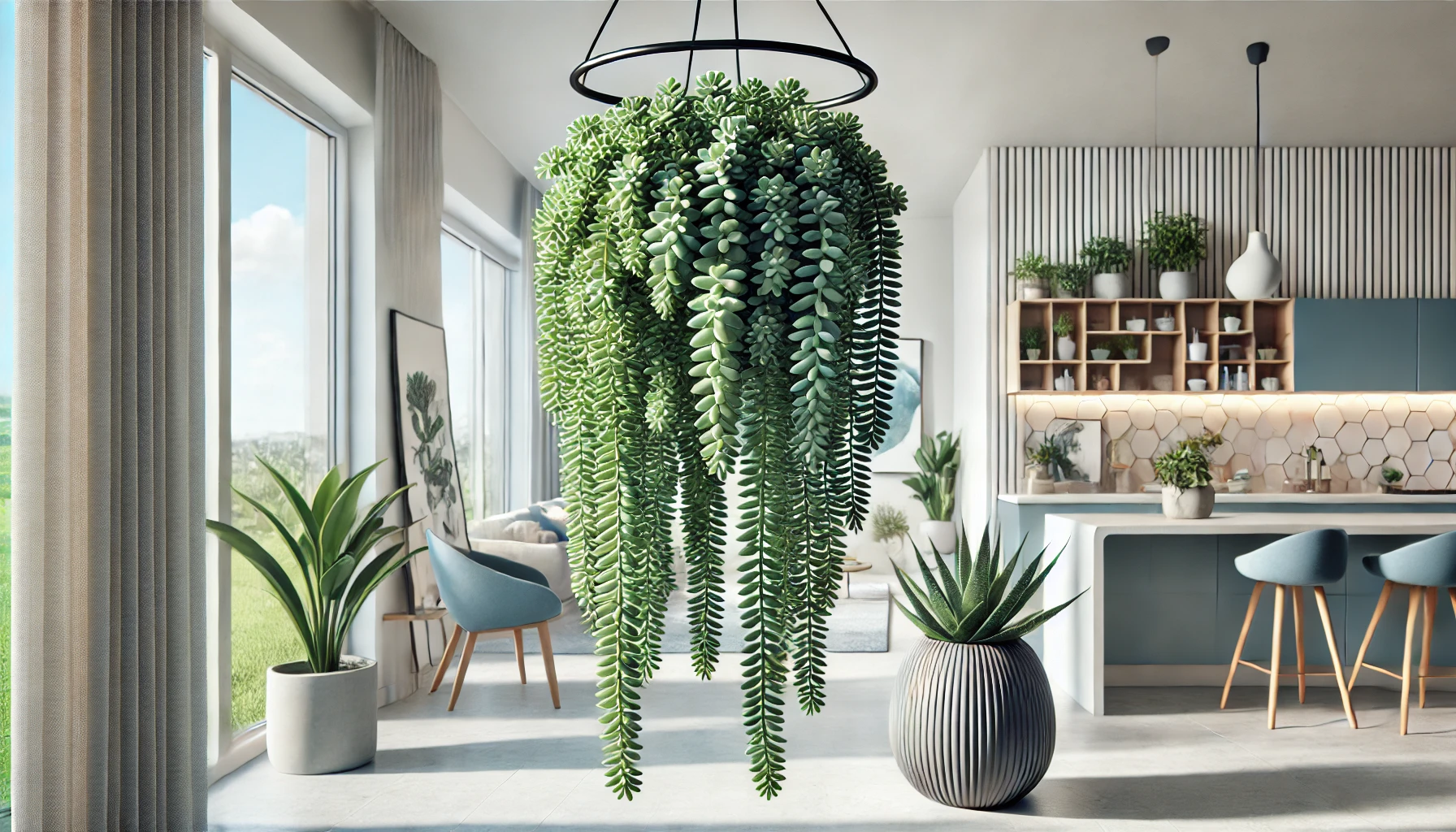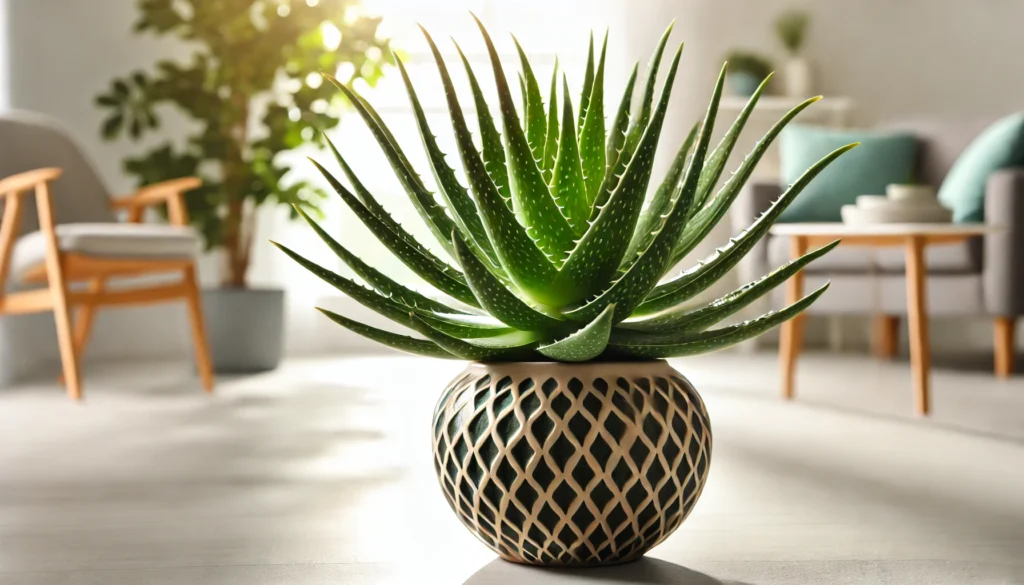
The Burro’s Tail plant, formally known as Sedum morganianum, is a delightful and eye-catching succulent with long, trailing stems covered in plump, bluish-green leaves. This unique plant can grow up to 4 feet long, making it an excellent choice for hanging baskets or as a cascading accent on shelves and ledges.
A Glimpse into History and Ideal Growing Conditions
Native to southern Mexico and Honduras, the Burro’s Tail has been cherished by plant enthusiasts for its striking appearance and easy care. It thrives in warm, dry climates, making it well-suited for succulent lovers. Ideal growing conditions for the Burro’s Tail include well-draining soil, plenty of sunlight, and occasional watering. This plant is perfect for those who prefer low-maintenance greenery, as it can tolerate some neglect and still look fabulous.
Pet Safety: Non-Toxic and Pet-Friendly
One of the many appealing aspects of the Burro’s Tail plant is its non-toxic nature. This makes it a safe addition to households with pets, as there’s no risk of harm if your furry friends decide to nibble on the leaves. You can enjoy the beauty of this plant without worrying about the safety of your cats or dogs.
Expert Tips for Burro’s Tail Care
Caring for a Burro’s Tail involves understanding its specific needs and creating an environment that promotes healthy growth. Here are some essential tips to keep your plant thriving.
Watering and Humidity
Burro’s Tail plants prefer to be kept on the drier side. Water your plant thoroughly but infrequently, allowing the soil to dry out completely between waterings. Overwatering can lead to root rot, so it’s essential to ensure the pot has good drainage. These succulents do not require high humidity and actually thrive in low-humidity environments, making them ideal for most indoor settings.
Soil, Light, and Temperature
For optimal growth, plant your Burro’s Tail in a well-draining cactus or succulent mix. This type of soil prevents water from accumulating around the roots. Position your plant in a spot where it will receive bright, indirect light. Direct sunlight can cause the leaves to scorch, while too little light will result in leggy growth. Ideal temperatures for Burro’s Tail range from 65-75°F (18-24°C), but it can tolerate cooler temperatures down to 50°F (10°C) for short periods.
Troubleshooting Common Issues
Like any plant, the Burro’s Tail can encounter problems. Yellowing leaves often indicate overwatering, while shriveled leaves typically result from underwatering. If your plant becomes leggy, it might not be receiving enough light. Regularly inspect your plant and adjust your care routine as needed. Pests such as mealybugs and aphids can occasionally be an issue. Treat infestations promptly with insecticidal soap or neem oil.
Propagation and Benefits
Propagating the Burro’s Tail is a fun and easy way to expand your plant collection or share with friends. The most effective method is to take stem cuttings and allow them to callus before planting them in soil. Alternatively, you can propagate the plant by gently removing individual leaves and placing them on top of the soil until they root.
Beyond its aesthetic appeal, the Burro’s Tail offers several benefits. Its trailing stems add a touch of greenery to any space, creating a calming and inviting atmosphere. Additionally, like many succulents, it helps purify the air by removing toxins.
Final Thoughts
The Burro’s Tail plant is a charming and resilient succulent that can bring a touch of nature into your home. With its non-toxic nature and relatively easy care requirements, it’s an excellent choice for both novice and experienced plant enthusiasts. By understanding its needs and providing the right conditions, you can enjoy the beauty and benefits of the Burro’s Tail plant for many years. Whether you’re looking to add a single plant to your collection or create a cascading display, the Burro’s Tail is sure to be a delightful and rewarding addition.



